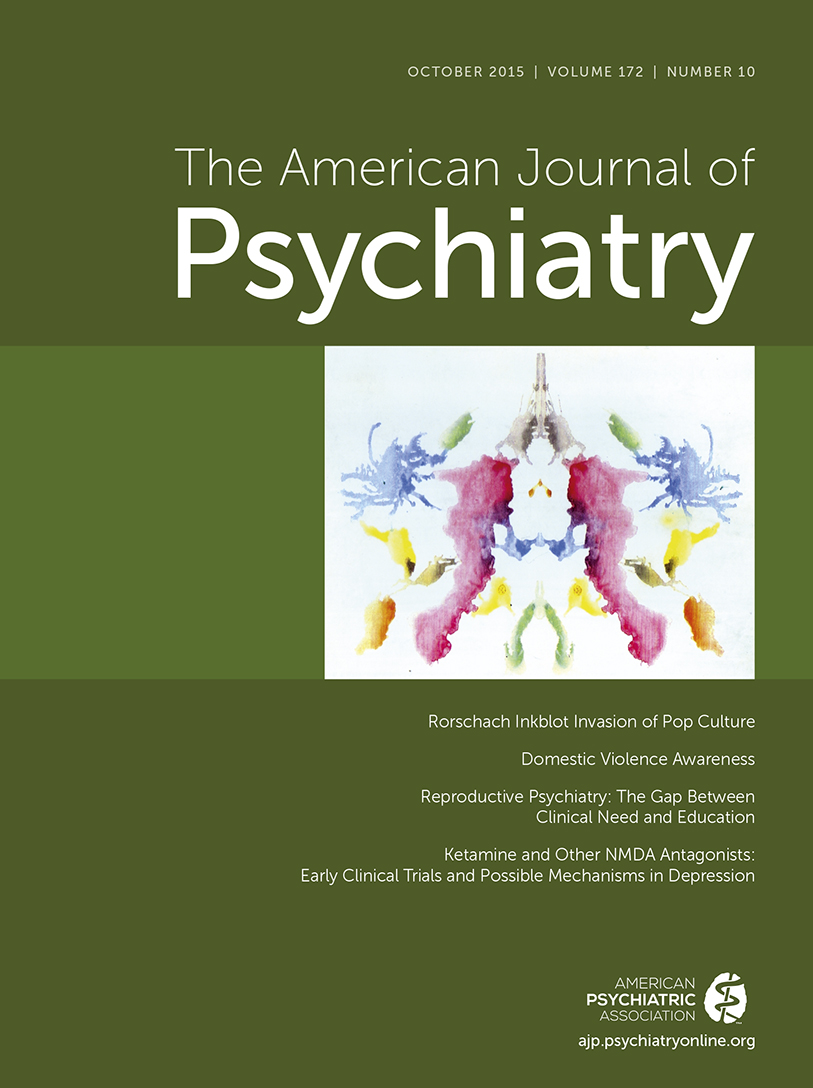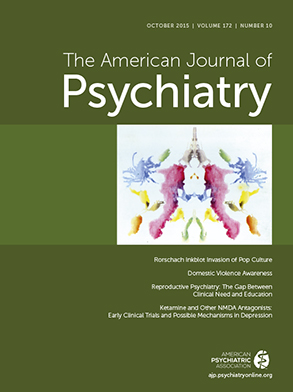Over the past three decades, there have been substantial advances in our understanding of the strong influence of sex hormones on women’s mental and physical health. In particular, the literature clearly documents that fluctuating levels of reproductive hormones can manifest as premenstrual, perinatal, and perimenopausal psychiatric disorders in women who are vulnerable to these fluctuations (
1–
3). The research over the past three decades came in response to a 1985 Public Health Service task force report on women’s health that noted deficits in our knowledge regarding key women’s health problems and that called for an expansion of biomedical and behavioral research to emphasize conditions unique to, or more prevalent in, women (
4). In response, the National Institutes of Health (NIH) created a policy encouraging inclusion of women in clinical research. Because implementation of this policy was inconsistent and unmonitored, Congress passed legislation in 1993 mandating fair inclusion of women and minorities in clinical research. As a result, in 1994 NIH began mandating that all grant applications either include women or justify the exclusion. This policy was updated in 2001, with further guidance on reporting data by sex.
Research resulting from these changes has dramatically expanded knowledge of the psychiatric sequelae of reproductive cycle transitions. Due to the accumulation of ample evidence, premenstrual dysphoric disorder, described in the medical literature since the time of Hippocrates, was finally included in DSM-5 (
5). Perimenopause has also been recognized as a time of heightened risk for depressive and anxiety symptoms (
6–
10), and the role of hormonal and other novel interventions is being investigated (
11). Importantly, depression has been found to be among the most prevalent perinatal illnesses, affecting up to 15% of women in the perinatal period (
12–
14). As of 2003, antidepressants were being used in approximately 13% of pregnancies—a rate that had climbed dramatically in the previous 10 years (
15,
16); with the current U.S. birth rate, that means that more than 600,000 fetuses every year are exposed to depression and/or its treatments. The risks of untreated antenatal depression have been identified and include a lower likelihood of engaging in prenatal care; increased rates of smoking and alcohol use; poorer physical health; and higher rates of preeclampsia, gestational diabetes, preterm birth, and low birth weight (
17,
18). Epigenetic effects of antenatal stress and depression on fetal development (“fetal programming”) are increasingly understood (
19–
21), as are the adverse long-term effects of postpartum depression on children (
22–
25). In addition to these risks, there is also considerable literature on the potential risks of treatments to both mother and fetus (
26–
28), as well as a body of literature concerning drug disposition and pharmacokinetic changes in pregnancy and postpartum that may require dosage adjustments (
29–
32). Clinicians who specialize in the field routinely use this new scientific information to craft individualized risk analyses for pregnant women who require treatment.
This increased body of knowledge has led to the growth of international professional societies such as the Marcé International Society for Perinatal Mental Health and the International Society of Psychosomatic Obstetrics and Gynecology. It has influenced public policy initiatives, including, for example, a number of statewide perinatal depression projects (
33) and mandatory screenings (
34). It has also begun to be disseminated into clinical practice via the emergence and growth of specialized clinical programs, which include outpatient and inpatient programs that offer perinatal consultations and ongoing treatment (
35); perinatal care settings that integrate mental health care (
36); a peripartum day hospital (
37); and, most recently, the first mother-baby inpatient unit in the United States (
38). Such programs have been created by specialists out of necessity because many general psychiatrists have not sufficiently mastered this new body of knowledge and are unwilling or unable to treat pregnant and postpartum patients. While there is no doubt that such programs provide outstanding care (
39,
40), they can neither begin to keep up with the clinical demand that leads to waiting lists months long nor help those who live in areas with no access to such specialized care.
Unfortunately, the education of psychiatrists about reproductive mental health has lagged behind advances in research, public policy initiatives, and innovative models of clinical care. We surveyed residency directors and found that only 59% of residency programs require any level of training in reproductive psychiatry and that only 36% believe all residents need to be competent in the field. The number of specialty postresidency training programs is increasing—at least 10 to date, as determined by our survey of fellowship programs—with additional opportunities in programs that include reproductive psychiatry within a broader agenda. However, there is no unified set of competencies for these training programs, nor is there a formal certification process. (This paragraph is based on our preliminary unpublished data.)
This dearth of reproductive mental health education has had problematic consequences for women. There is considerable undertreatment of major depression during pregnancy, and many prescribers and patients with antenatal depression struggle with treatment decisions when psychotropic medication is indicated (
41,
42). In the absence of reliable information from their physicians, women may be especially influenced by misleading, biased reports in both formal and social media. Media coverage tends to overestimate the risk of antidepressant medication during pregnancy while undervaluing the risks of untreated psychiatric symptoms during pregnancy (
43). The use of social media for gathering information may heighten perception of risks during pregnancy (
44).
Given the prevalence of psychiatric problems linked to reproductive cycle stages, the unique influences of reproductive transitions on symptom expression and treatment, the risks of untreated symptoms, and the evolution of research advances, the National Task Force on Women’s Reproductive Mental Health concludes that it is time for residency training programs to ensure that all psychiatrists acquire basic knowledge and skills in reproductive psychiatry. A key first step is to codify national standards for education in reproductive psychiatry. The National Task Force is working to define the current state of training in women’s reproductive mental health and to create a clearer subspecialty definition. By so doing, we hope to ensure the competent care of a group of vulnerable patients whom everyone, regardless of medical specialty, wants to see optimally treated.

